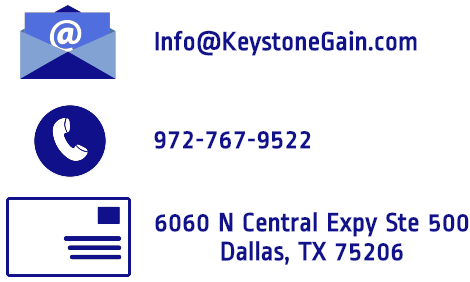Quality of Earnings - Best Practices
Ten considerations in a Quality of Earnings study
Quality of Earnings best practices and other considerations are discussed in this article. A Quality of Earnings study strives to establish the business’s cash generation ability. A Quality of Earnings (‘QE’) study is often requested by a buyer – prior to business acquisition – or by a lender – before extending credit. The buyer or lender often contracts independent professionals to conduct the QE study. A proper Quality of Earnings analysis encompasses a variety of elements. The following is a short list of considerations when determining the appropriate scope of a Quality of Earnings study.
1. A Quality of Earnings study is not an audit – There is a distinct difference between an audit and a Quality of Earnings study. Generally, in an audit, the emphasis is on the balance sheet. Conversely, a due diligence study focuses on the economic earnings power of the going concern. In addition, particularly for a closely held business, the fiscal year end is the appropriate measurement date for calculating annual financial statements, while in due diligence the measurement date is more likely to be the most recent trailing twelve months. The importance of adhering to a due diligence measuring date is that a business’ accounting team can leave critical reporting elements unaddressed until the fiscal year, which may have an effect on how the company’s performance is viewed.
2. What gives earnings “quality”? – In order for an earnings measure to be considered of high quality it must reflect cash flow and it must be sustainable. Earnings that are “tied up” in accounts receivable, for example, do not have much value because, despite being recognized, they have not yet been realized. In the same vein, earnings that are not sustainable due to understated expenses such as an unfilled executive position or deferred maintenance, would overstate sustainable earnings.
3. EBITDA vs. other earnings metrics – Many buyers default to earnings before interest, taxes, depreciation, and amortization (EBITDA) to measure economic earnings. Certainly, EBITDA is easy to calculate and easy to understand. However, unless the target company does not pay any taxes, has no working capital needs, and will never require any investment in long-term assets, EBITDA may not be the best tool available. While each situation is different, the buyers should consider if what they really want to know is what cash flows will be available to the stakeholders (e.g., equity and funded debt holders) then perhaps a free cash flow model would be more appropriate. There are different mathematically equivalent methods of calculating free cash flows (FCF) but this is a common one:
FCF= EBITDA ± ΔNWC – C – t
Where:
EBITDA is reported EBITDA, net of all due diligence adjustments
NWC is reported Net Working Capital, exclusive of cash and funded debt, net of all due diligence adjustments
C is normal replacement Capital expenditures, net of the proceeds from the sale of fixed assets
t is the cash taxes paid
4. Isolating the earnings – While a QE study should never be confused with an audit, they both use the following procedures that help isolate earnings. When attempting to isolate the earnings of the trailing twelve-months the QE professional should be performing a proof of cash. Next, revenue recognition should be tested to ensure it is in compliance with the company’s policy as well as with Generally Accepted Accounting Principles (GAAP). Any variations from either could have a material effect on earnings calculations. Finally, the beginning and ending balance sheets of the trailing twelve months should be scrutinized to determine if revenues and expenses are in the proper periods, liabilities and reserves are appropriately recorded, etc.
5. Effect of net working capital – Occasionally, we are asked to focus only on EBITDA and disregard the net working capital. However, the adjustments to net working capital will affect free cash flows. As an example, if growth requires additional working capital, free cash flow will be significantly different than EBITDA. Evaluating the accuracy of the net working capital accounts should not be overlooked.
6. Seller’s adjustments – The seller’s adjustments to EBITDA usually include the obvious non-recurring expenses and perhaps excess compensation. The study should include verification of these claims including obtaining original documentation. Estimates should not be accepted and the rationale for each adjustment should be challenged.
7. Due diligence adjustments – These adjustments are those identified by the due diligence team. These adjustments might include overlooked onetime expenses, accounting errors, effects of unrecorded or under recorded liabilities, or sometimes reversal of some sellers adjustments that fail to hold up to scrutiny. The number of these adjustments should give the buyer not only a better understanding of the economic earnings but provide some insights into the quality of the company’s information and the strength of the finance team.
8. Pro forma adjustments – Pro forma adjustments are frequently overlooked and misunderstood. These adjustments usually are utilized to “normalize” the trailing twelve months earnings. Such adjustments might be made to annualize a midterm rent increase or account for a new union contract. The pro forma adjustments address the sustainability of the business.
9. Concentrations and operational risks – the relative risk of the business’s earnings is an important aspect of a Quality of Earning study. Many studies will cover such issues as customer concentrations, but the buyer or lender may want to consider other concentrations as well (i.e., industry, product/service, distribution channel, etc.). These concentrations should be evaluated on a gross profit or contribution margin level. In addition, other risks to consider include cost structure, price strategy and elasticity, key man issues, and dependency on intellectual property.
10. Other considerations – Other diligence procedures that might provide insight on the Quality of Earnings, and that you should discuss with your due diligence advisor include the following:
- Run rate study – if the company is in a high growth mode or in sharp decline the run rate may be more relevant than the most recent trailing twelve months.
- Related party analysis – if the company has numerous related party transactions, it is important to make the proper adjustment to account for the market value of these transactions, and to make sure that any change in control will not affect critical relationships with customers or suppliers.
- Debt and debt-like items – liabilities that do not provide any value to the company but may have an effect on future cash flows may need to be dealt with in negotiations. Such liabilities might include pending regulatory or legal disputes, underfunded pension plans, and deferred compensation plans.
- Commercial analysis – if the investment thesis is highly dependent upon management’s projections it may be necessary to analyze the competitive environment, the go-to-market strategy, and the existing customers perception of the company and its products.
This list represents an overview of some of the areas of focus a buyer or lender should consider when attempting to validate their investment/credit decisions. To be sure, the buyer or lender should center its efforts on specific areas of concern, but it is critical to understand the interrelationships of these areas in order to help keep the due diligence efficient, focused, and relevant.








